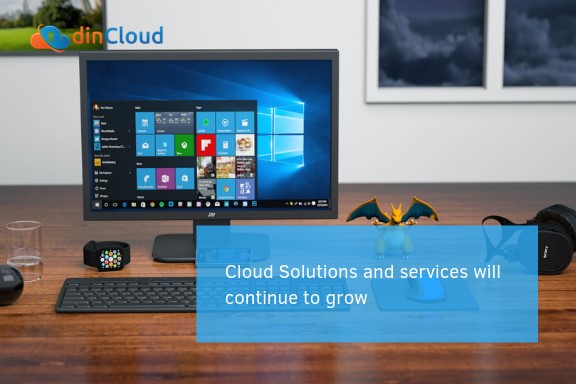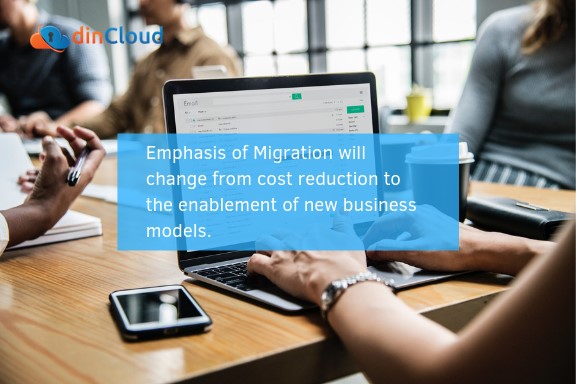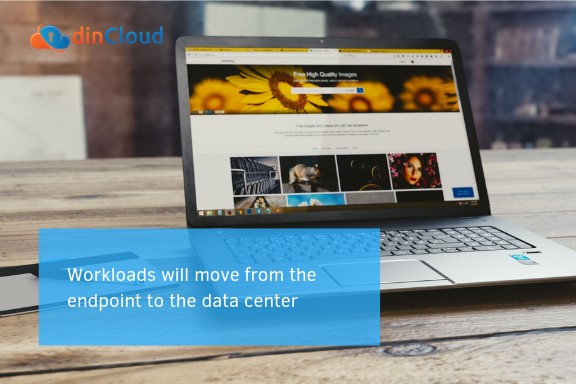“With the new day comes new strength and new thought.” ~Eleanor Roosevelt
Every year, industry experts across the world try to look into the crystal ball and theorize about what the next year will hold. This year, we are no different. It will be interesting to see in a year how many of these came to fruition.
Desktop-as-a-Service (DaaS) has been on a strong upward trend for a few years now. The efficiencies, scalability and agility it gives businesses, along with significant cost savings has attracted the interest of many businesses. Research by Technavio suggests a “tremendous opportunity” for businesses and predicts the market to grow by over 40% by the year 2020. Looking back at the most recent year, 2018, there were several significant events. As a result of the significant growth, DaaS cloud services became the de facto choice of business for their desktop management solution, something that had been predicted by Gartner for years. Microsoft and Citrix announced end-of-life on several of their desktop solutions and created new solutions with the goal of driving even more adoption of DaaS cloud services. Businesses have taken notice of the disruptive technology and all of the benefits it can give.
DaaS cloud desktop service could already be considered one of the more mature technologies for businesses today, but even so, here is what we think will change as we move into 2019.
Cloud solutions and services will continue to grow exponentially

Gartner is predicting that just the public cloud market will grow to be worth $221 Billion in the coming year, a $40 Billion growth in just one year. This does not include the private and hybrid cloud models which have just as much growth. Let’s take a look at a few of the statistics as reported by Cloud Worldwide Services:
- SaaS: Bain & Company anticipates that the subscription-based software-as-a-service (SaaS) sector will grow at an 18% CAGR by 2020,and by 2021 it is expected to reach 45% of total application software spending.
- PaaS: KPMG expects an increase in growth from 32% in 2016 to 56% in 2019 from the platform-as-a-service (PaaS) industry, making it the fastest-growing sector among cloud platforms, with an estimated revenue of 10 billion dollars.
- IaaS: Gartner predicts a revenue of 72.4 billion U.S. dollars by 2020, with a notable increase in the number of IaaS (infrastructure-as-a-service) solutions, services worldwide.
DaaS goes one step above SaaS, in that it combines a variety of SaaS solutions into one integrated, automated workspace. DaaS can manage several different SaaS applications, reducing the complexity of your IT deployment needs.
Emphasis of the migration will change from cost reduction to enabling new business models.

Forbes has reported that “76% of enterprises are looking to cloud apps and platforms to accelerate IT service delivery.” While the initial drive to the cloud was due to the ability to procure enterprise grade solutions without the large infrastructure costs, the trend has changed. Businesses have seen that the benefits go far beyond simple cost reduction and with the increasing demands of the workforce for more flexible work arrangements, increasing competition and rapidly changing customer demands for innovation, cloud solutions have given businesses the ability to meet all of these needs. The message in the coming year will change from the cost savings to how business cloud technologies, like DaaS cloud desktop services, enable businesses to increase productivity, efficiency, and enable new, agile business models.
Workloads will move from the endpoint to the data center

Looking ahead, we believe that the endpoint will cease to exist as we know it. As more businesses migrate and host data in cloud infrastructure, the endpoint will no longer hold the data and will simply become a device that can access the data. The demands on the endpoint will be reduced, increasing the lifecycle of the device. Additionally, the loss of the device will no longer be a significant risk since it does not store any data. The data remains secure on the server and the user can access the data from any other internet capable device.
DaaS Cloud Services: Are you ready?
We believe that 2019 will be another big year for Desktop-as-a-Service (DaaS). Enhancements to features and solutions, as well as the growing trend of remote work will further drive business towards the technology. Not to mention the increased security, productivity and agility of staff all while reducing CapEx and even OpEx. The question is no longer if businesses will move to cloud-based business solutions like DaaS, but when.
Want to learn more? Start here:


